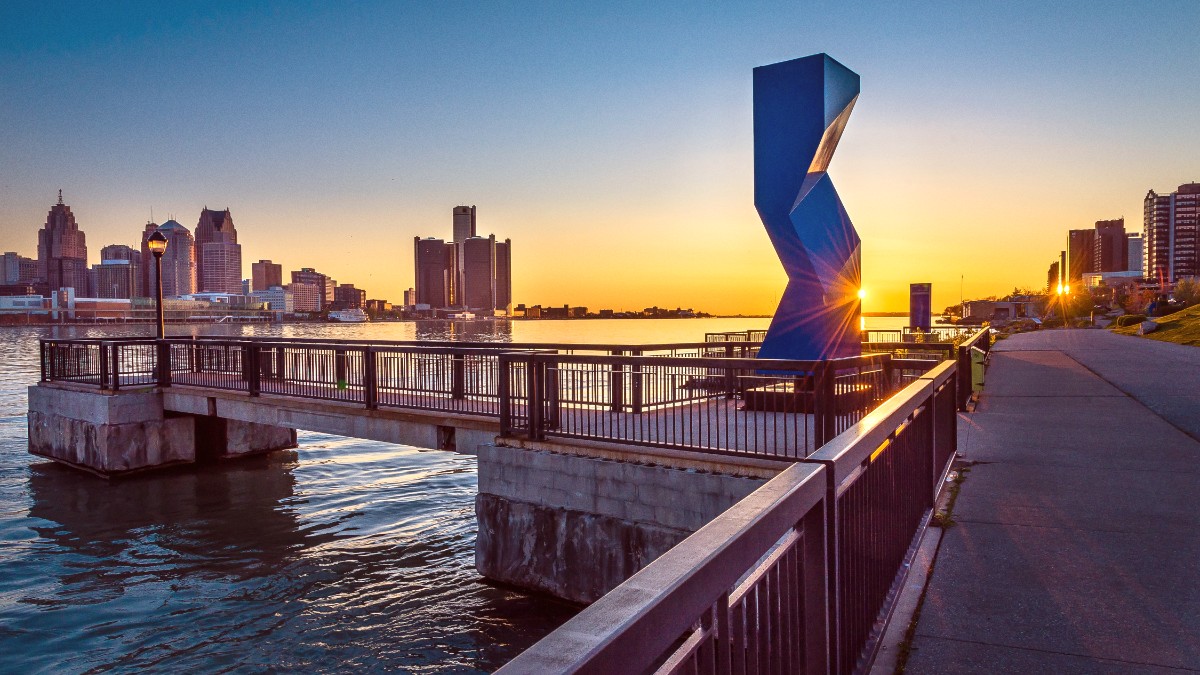
Great Lakes, USA
This city, which faced trying times, has actively rebuilt itself. It champions new industries, welcomes new residents, and revitalizes public spaces. Today, Detroit thrives with energy. Downtown streets, once quiet, now present busy restaurants, new businesses, and lively parks. Historic buildings discover new life, art adorns unexpected spaces, and a strong sense of community guides its path forward. Visitors find a city with a rich past that inspires its current energy. Detroit offers an experience rooted in history yet forward-looking.
This guide shares practical information for your Detroit visit. It covers details needed to plan and enjoy your time here. Discover a city that keeps moving forward, a place that continues to shape history.
Your journey through Detroit will be both informative and engaging, providing a memorable experience.
Detroit sits in southeastern Michigan, on the banks of the Detroit River. This river forms a part of the international boundary between the United States and Canada. It also joins Lake St. Clair to Lake Erie, making Detroit a truly Great Lakes city. Its location presents both a border town atmosphere and a connection to vast freshwater resources.
The city's landscape is largely flat, characteristic of the Great Lakes Lowlands region. This terrain aided the extensive development of its industrial infrastructure. The Detroit River is not merely a border marker; it is a busy waterway for international shipping and a recreational area. Across the river stands Windsor, Ontario, Canada, a city easily visible from Detroit's riverfront. This close proximity creates an unique cross-border dynamic.
Southeastern Michigan, on the Detroit River.
International boundary with Canada (Windsor, Ontario).
Connects Lake St. Clair to Lake Erie.
Predominantly flat, typical of Great Lakes Lowlands.
Largest city in Michigan and core of Metro Detroit.
The city's geography shaped its past as a manufacturing hub and continues to influence its development as a modern urban core. The connection to the Great Lakes defines much of its character, with water views and access to natural beauty alongside its urban core.
Its strategic position on the waterway between Lake Erie and Lake Huron was pivotal for fur trading and later for industry.
Proximity to the Great Lakes offers ample freshwater resources and scenic beauty along the riverfront.
Detroit's setting on the international border and its waterways are defining features of its character and history.
Detroit's story presents dramatic highs and challenging lows. French explorer Antoine de la Mothe Cadillac founded it in 1701 as Fort Pontchartrain du Détroit. This location was chosen for its strategic position on the waterway connecting Lake Erie and Lake Huron, a fur trading route. The fort became a French outpost, then British, before becoming part of the United States.
The 20th century transformed Detroit into a global industrial giant. Henry Ford's innovation of the assembly line and the rise of the automobile industry made Detroit the "Motor City." Ford, General Motors, and Chrysler (now Stellantis) set their headquarters here. This boom drew millions seeking work, making Detroit a melting pot of cultures and a symbol of American manufacturing power. The city's population grew rapidly, and its influence extended worldwide.
Detroit produced Motown Records in the 1960s, a sound that blended R&B, soul, pop, and gospel.
Home to major automotive giants and the innovation of the assembly line.
Established in 1701 as Fort Pontchartrain du Détroit by French explorer Antoine de la Mothe Cadillac.
The late 20th century presented deindustrialization, population decline, and economic struggles. Manufacturing jobs moved away, suburbanization drew residents out, and the city faced deep social issues. Despite these challenges, Detroit maintained its spirit.
Approximate city proper population (2023 estimate).
Anchors a metropolitan area of approximately 4.3 million.
Growth in healthcare, IT, manufacturing, finance, logistics, and professional services.
Busy restaurants, new businesses, and lively parks.
Home to the Detroit Institute of Arts and cultural institutions.
A historic district with unique character and growing appeal.